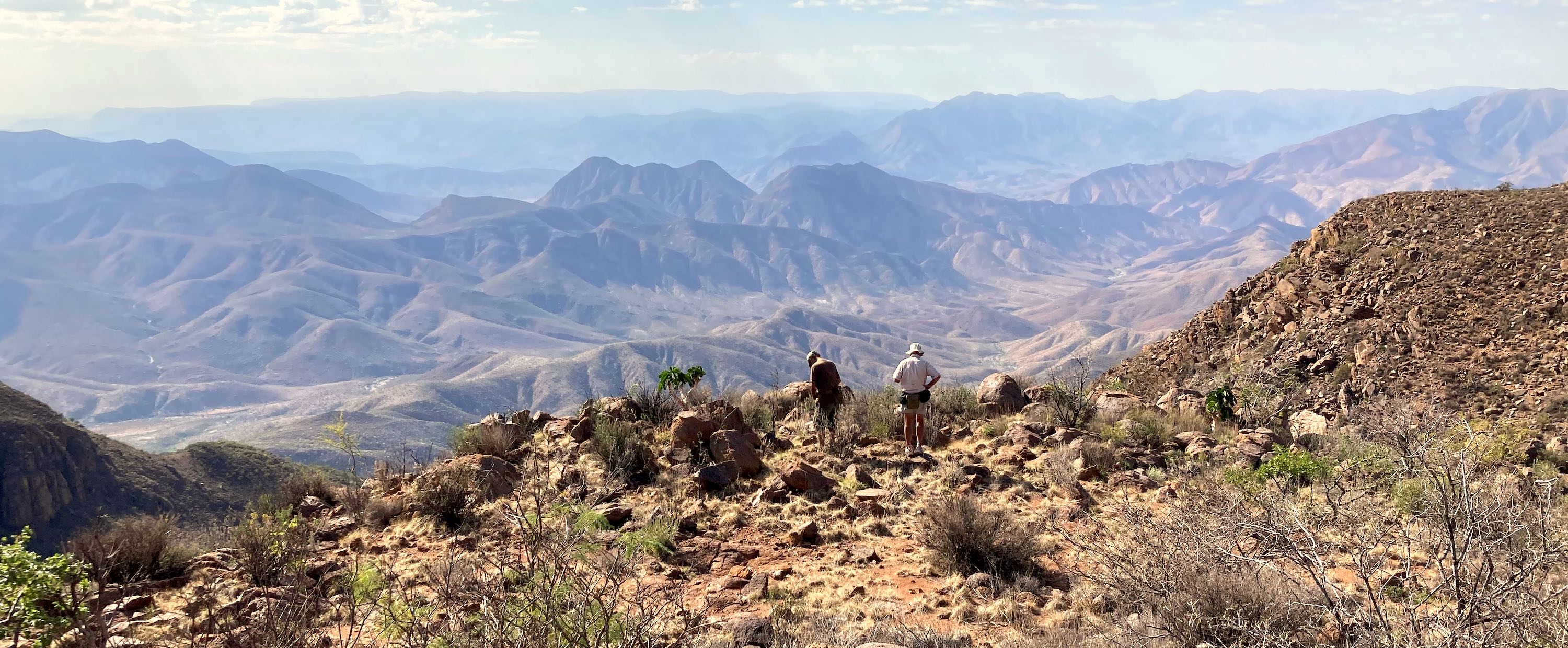
Helicopter Science
Unlocking the Botanical Secrets of the Kaokoveld Mountains
9th September 2021
There are few places left on earth that scientists haven't visited to collect and study fauna and flora. Unexplored places invoke images of the deep ocean, inaccessible parts of Antarctica, or the highest mountains on Earth. It may come as a surprise that there are a few almost totally unexplored places right here in Namibia and just across the border in Angola. The region that covers north-western Namibia and south-western Angola, called the Kaokoveld, is well-known by scientists and intrepid tourists. Yet the peaks of the highest mountains in the Kaokoveld are so difficult to access that no one has ever scaled them to study the plants and animals that live on what appear from a distance to be inhospitable, barren mountaintops. Until now.
During April 2021, a team of adventurous scientists from the Biodiversity Research Centre of the Namibia University of Science and Technology (NUST) and the Instituto Superior de Ciências de Educação (ISCED) da Huíla in Angola embarked on a modern-day adventure of discovery in one of the last truly unspoiled remote wilderness areas in the world. Our target: three of the highest mountaintops within the Kaokoveld Centre of Endemism, namely Middelberg in the Otjihipa Range, Serra Tchamalindi and Serra Cafema.
The Kaokoveld Centre of Endemism is known for its many plants and animals that occur nowhere else on earth (such species are known as endemic
). The Kaokoveld Centre is bordered in the west by the Atlantic Ocean and stretches 100 to 150 km due east through the Namib Desert, the pro-Namib and the Great Escarpment to the inland plateau of southern Africa. Elevation ranges from sea level to 2065 m in the Ovahimba Highlands just south of the Kunene River and 2573 m at the top of Brandberg mountain (Namibia's highest peak) in the southern Kaokoveld. The area receives mainly summer rainfall that ranges from an average of less than 50 mm in the west to up to 300 mm in the east – but it is highly erratic and patchy – while the low-lying and escarpment areas regularly receive fog from the bordering Atlantic Ocean. All of these physical conditions make living here extremely challenging, which is why so many plants and animals are uniquely adapted to this harsh environment.
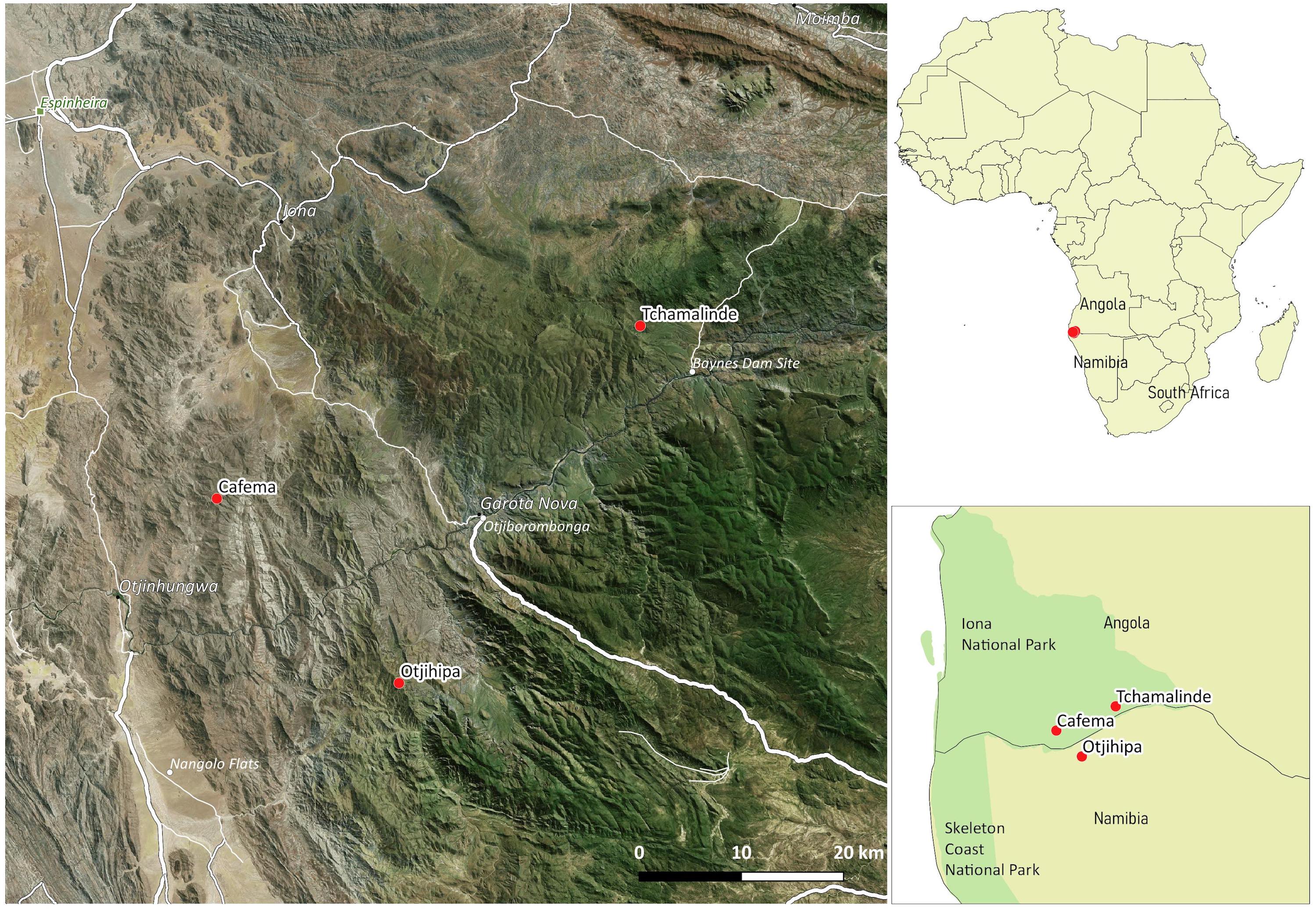
Surrounded by vast stretches of drylands in the Kaokoveld, the Otjihipa Range in Namibia and the Serra Tchamalindi and Serra Cafema in Angola rise to heights of about 2000 m above sea level, separated from the isolated shores of the Skeleton Coast and the cold Benguela current by the gravel plains and sand dunes of the Namib Desert. Both the location and altitude of these mountaintops make them tantalising targets for scientists – they could harbour endemic species that are not found in the lower-lying areas, especially Afromontane species (i.e. plants and animals associated with African mountains).
Access to these peaks is notoriously difficult, however. There are no roads, the terrain is extremely rocky, and the stifling heat is even more perilous for human explorers due to the absence of water. To reach them, explorers would have to hike for several days carrying all of their own water, far from any emergency support services. Consequently, very few, if any, scientific expeditions have scaled them, and studying the species on these mountaintops remained a pipe dream.
The only way to reach these mountains in relative safety is via helicopter. A generous grant from the European Union made hiring a helicopter for this expedition possible, thus turning the dream into reality. Helicopter forays from our base camp allowed our expedition team to reach the peaks with sufficient food, water and necessary equipment to spend several days and nights on each mountain. Although the team represented a range of expertise, and many interesting animal species were found, we focus here on the botanical side of the mission and share some of the most exciting plant species found on each of the three mountaintops.
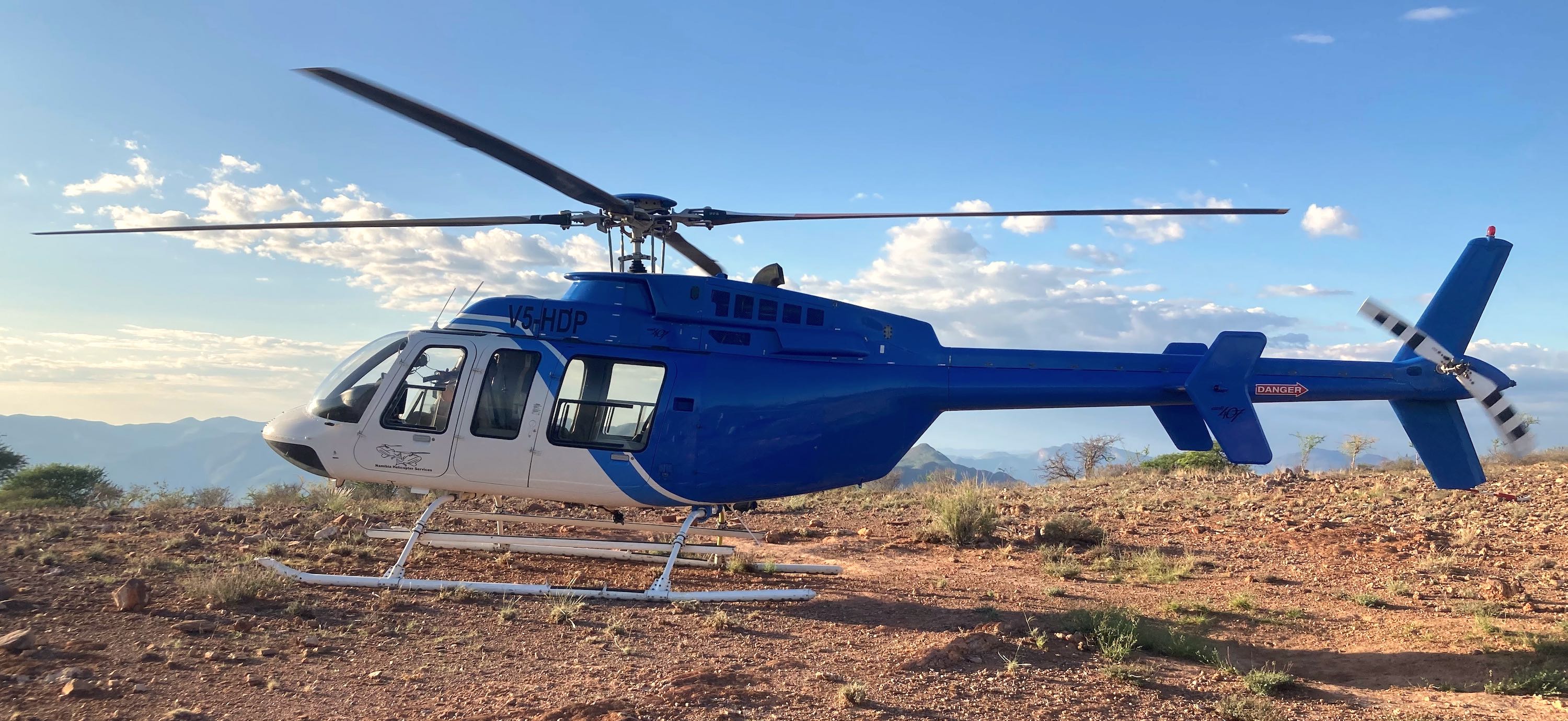
The Otjihipa Range
The Otjihipa range in Namibia is bordered by the Kunene River in the north and the Marienfluss Valley in the west. The team visited one of the highest areas of the easternmost part of this range, a roughly 10 km long, northwest-southeast ridge with the highest peak in the northwest at 1973 m. Our temporary camp was centrally situated on this ridge, which we called Middelberg (translated: middle of the mountain). Unlike what some may expect, the ridge is not bare rock with a few sparse grasses and herbs, but boasts a diverse shrub and woodland vegetation as two geological formations meet on top of this plateau that create different soil types.
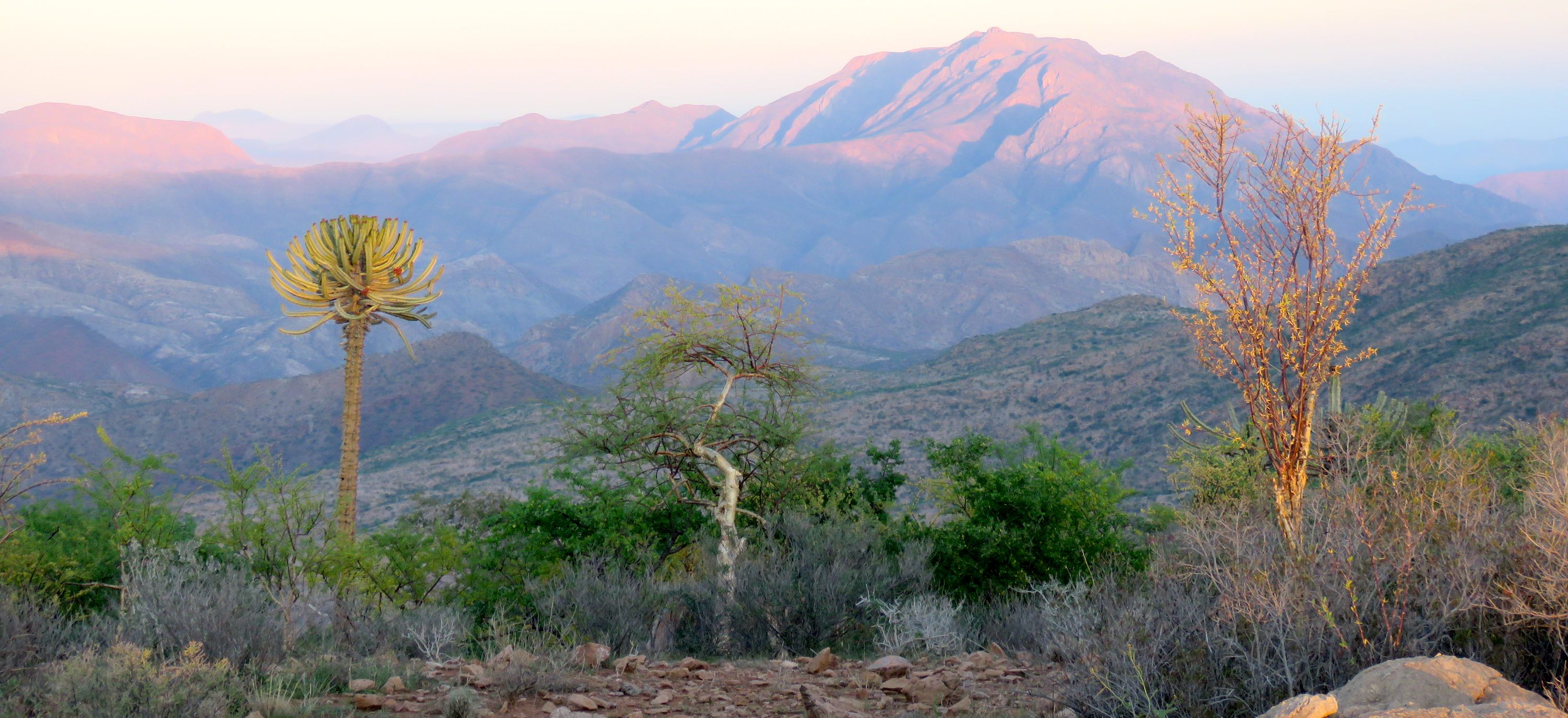
Many Kaokoveld endemic plant species were found, particularly from the genus Euphorbia. These included the majestic Kaoko tree-euphorbia (Euphorbia eduardoi) which grows in abundance on the plateau and slopes, the rare short-stemmed candelabra tree (Euphorbia otjingandu) and the smaller, thorny ohahi (Euphorbia otjipembana). One of the most common tree species was the paper-barked milkbush (Euphorbia guerichiana), which was more often than not damaged at the roots and lower stem by porcupine. Perhaps the most exciting botanical find on this mountain was the Angola cabbage tree (Cussonia angolensis) that was previously only known from the Baynes Mountains in Namibia further to the east (other populations are known in Angola).
Beyond plants, one of the most spectacular finds on this mountain was a large, two-chambered dry cave with intact stalactites and stalagmites. Our cursory investigation suggested that it was pristine and did not seem to have been visited or used by humans before.
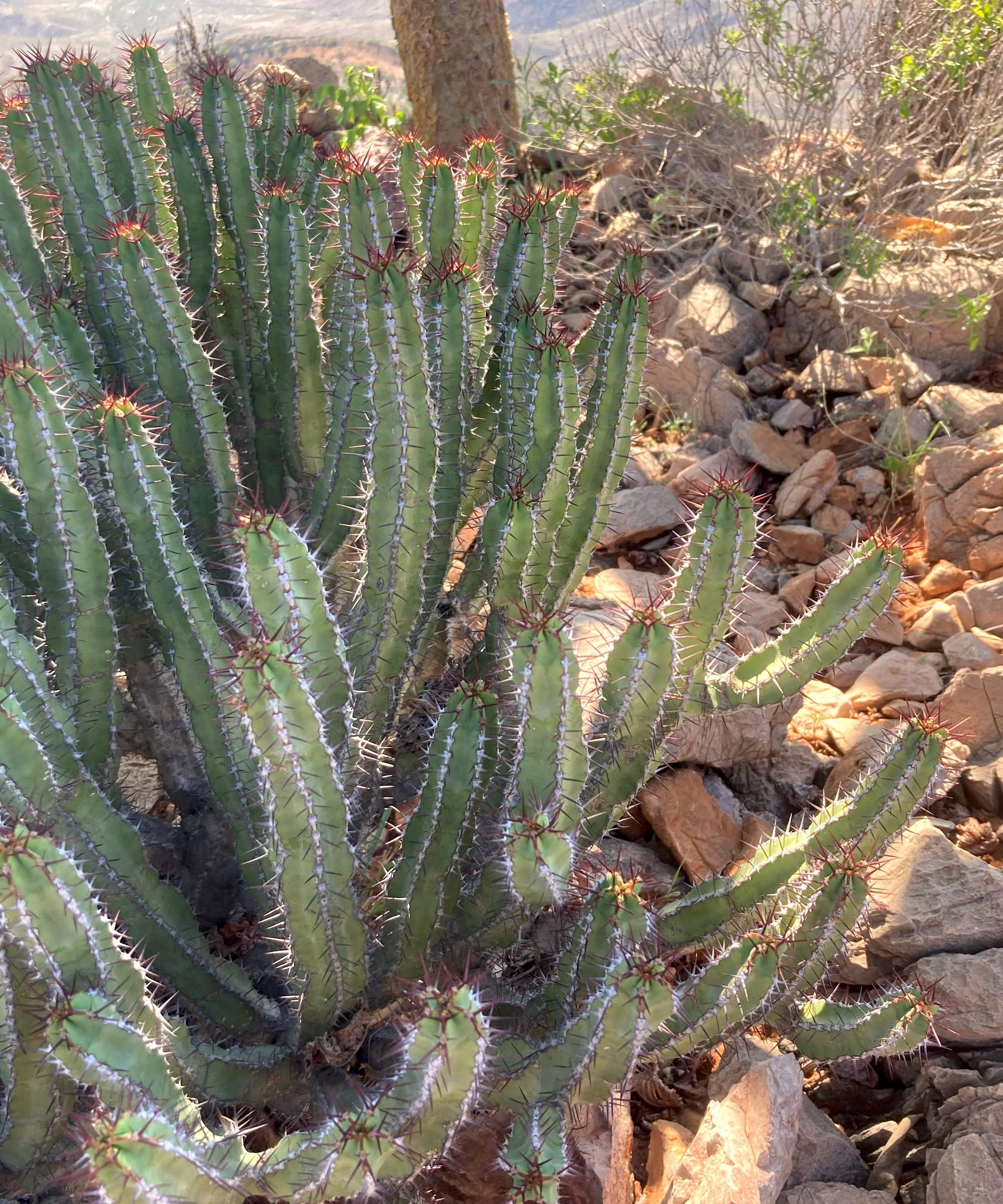
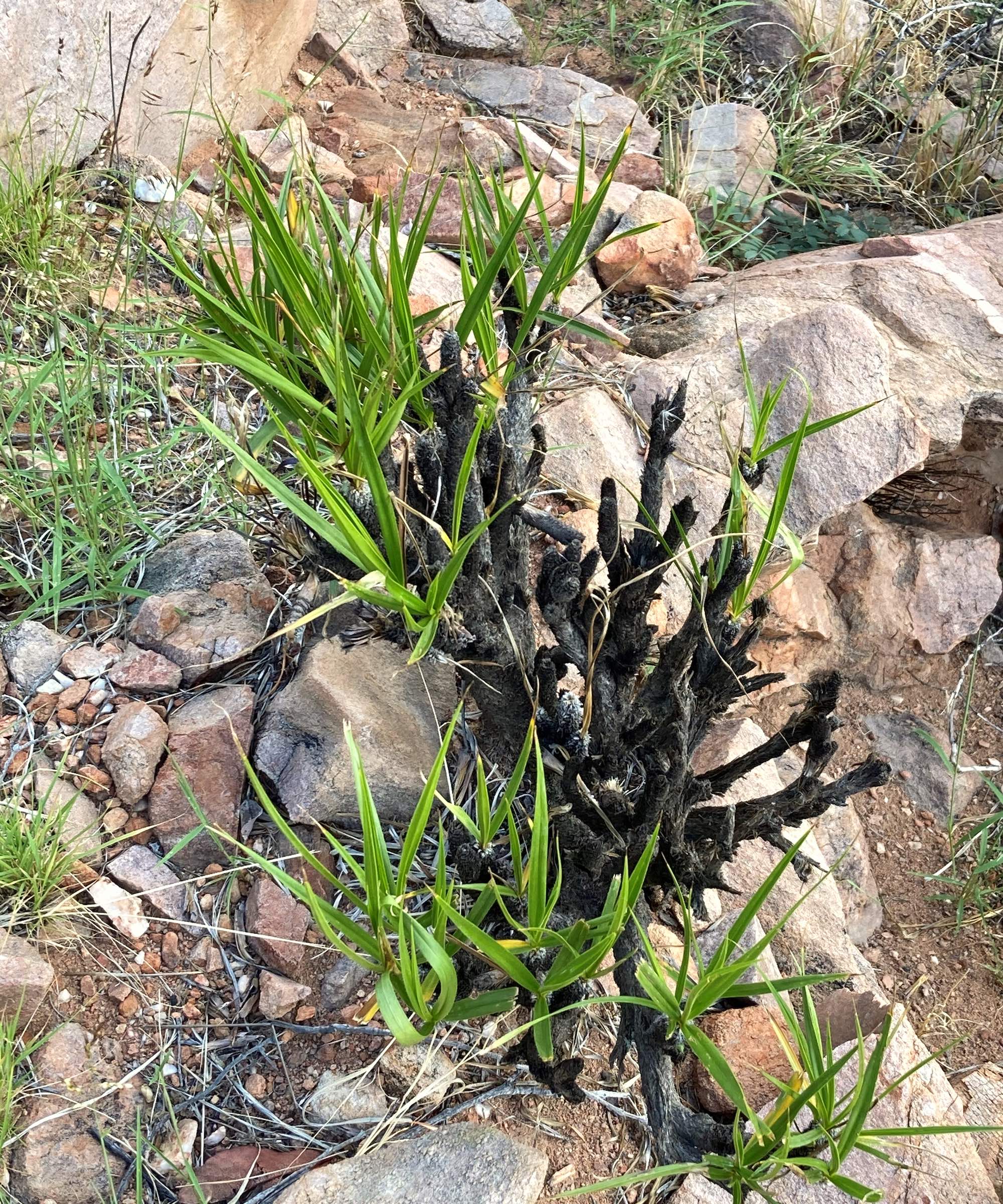
Serra Tchamalindi
Serra Tchamalindi is a 40 km long, crescent-shaped west-east quartzitic sandstone range located immediately north of the Kunene River in Iona National Park in Angola. The undulating upper plateau has an elevation of 1700 to 1900 m and is surrounded by sheer cliffs. Various drainage lines cut through the cliffs from the central west-east watershed forming deep gorges in places. The team visited the easternmost section of this range and set up camp at about 1420 m elevation, as the helicopter could not land higher up the mountain where it was covered with a continuous tree layer.

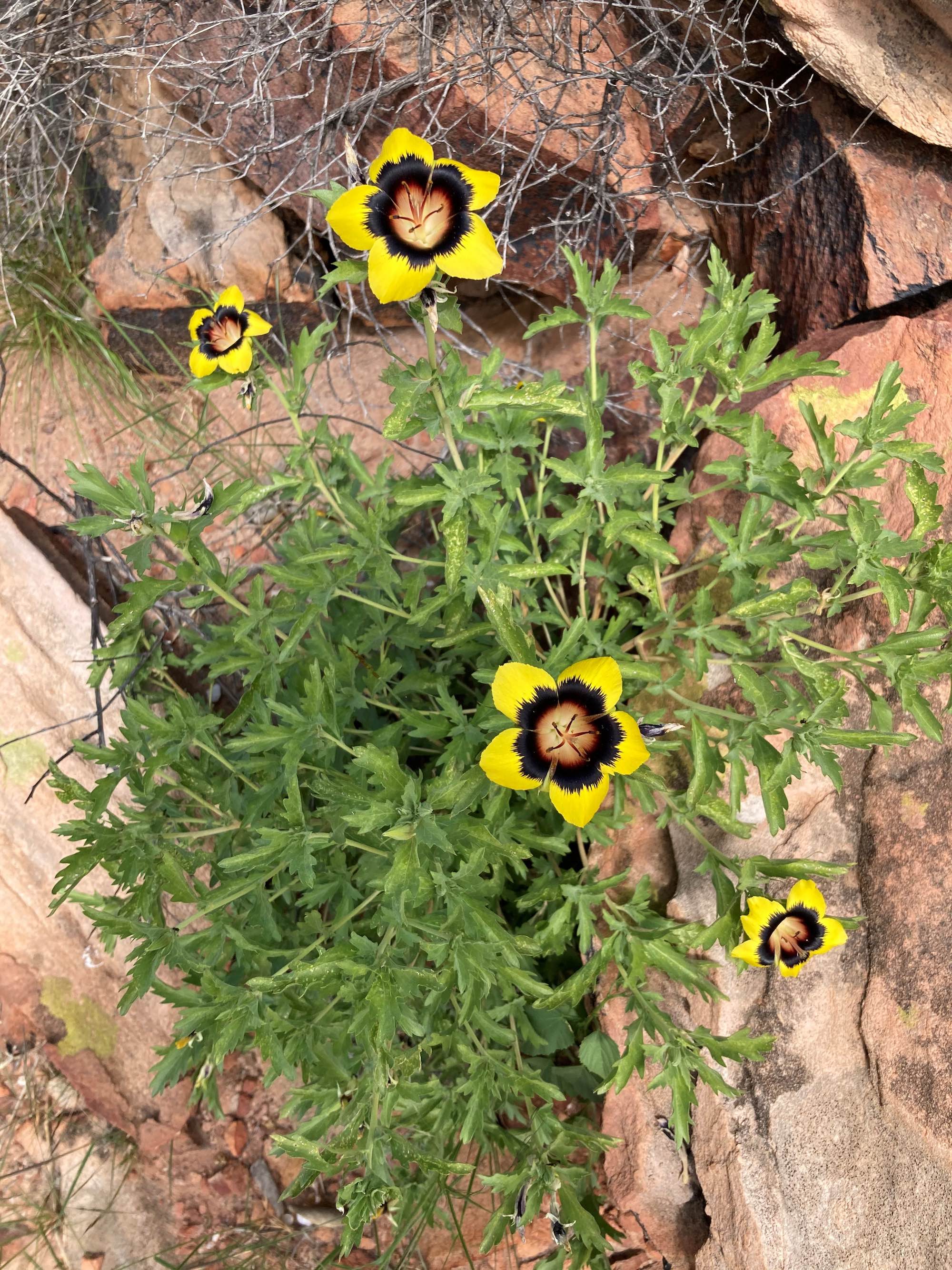
The vegetation near the camp was a combination of mopane savanna and afromontane savannah. Besides Mopane trees, Commiphora (myrrhs) and Combretum (bushwillows) shrubs and trees dominated the landscape. The beautiful Kaokoveld endemic flower Turnera oculata var. paucipilosa thrives on this mountaintop. On the drier slopes we found, amongst others, two resurrection plants: the resurrection bush (Myrothamnus flabellifolius) and the black stick lily (Xerophyta retinervis). As their name suggests, resurrection plants appear to be totally dead during the dry season but suddenly turn green with the rains and even flower under good conditions. The highlight of this mountain visit was finding specimens of the as yet undescribed large-leaved sesame tree (Sesamothamnus leistneri ined.), which extended the known distribution from Namibia into Angola.

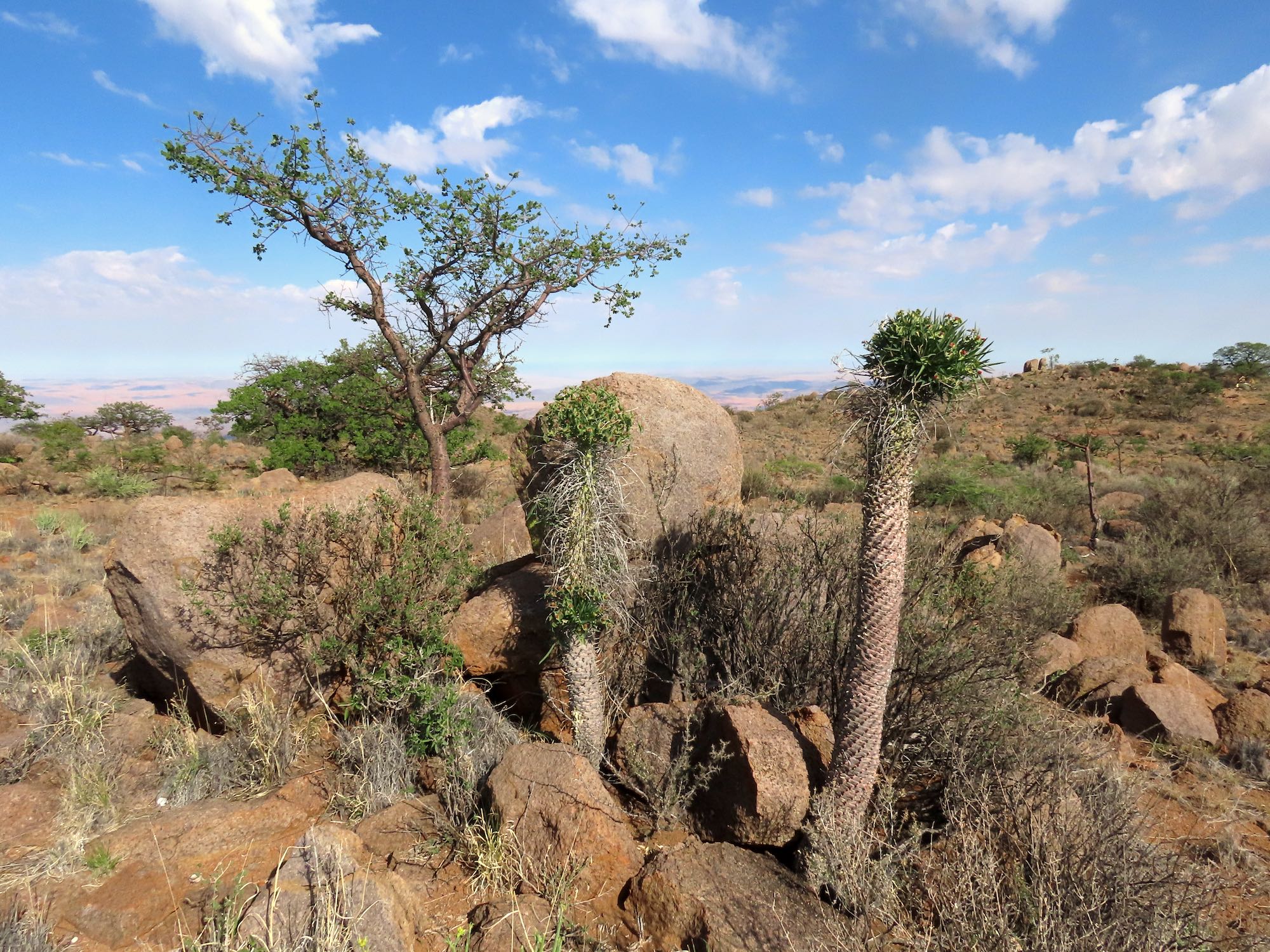
Serra Cafema
This 2050 m high granite mountain is situated on the western edge of the escarpment zone in Angola, opposite the well-known Marienfluss Valley in Namibia. At 85 km from the coast, it was the closest of the three mountain tops to the Atlantic Ocean. The 7 km north-south plateau gradually slopes from 2050 m in the south down to 1300 m in the north and receives fog and a cool west wind from the Atlantic. We set up camp within 100 m of the highest point.
The top of this high mountain had a surprising amount of vegetation, which consisted of a mosaic of hardy Cape fynbos-like shrubs (known as sclerophyll plants) and dry savanna vegetation with large-stemmed Namib resin trees (Ozoroa crassinervia). To our delight, another beautiful Turnera flower was common here (Turnera oculata var. oculata). This large mountain boasts an unexpected variety of ecological niches that host a range of succulent and tree species, from the paintbrush flower (Kleinia longiflora), devil's trumpet (Tavaresia angolensis) and mother-in-law's-tongue (Sansevieria pearsonii) to the jacket-plum (Pappea capensis) and the carrot tree (Steganotaenia araliacea).
We were particularly pleased to find several species that until now were thought to be endemic to the Otjihipa Mountains, such as Commiphora otjihipana and Pelargonium vanderwaltii. Another surprise was the tall Euphorbia monteiroi subsp. brandbergensis that was previously only known from the Brandberg and Spitzkoppe further south in Namibia. Even more importantly, we recorded only the second locality of the ultra-rare Euphorbia leistneri, which was previously known only from the hot Kunene River Valley close to Epupa Falls in Namibia. With its amazing plant diversity, this particular peak was a hot favourite among the plant experts on the expedition team!
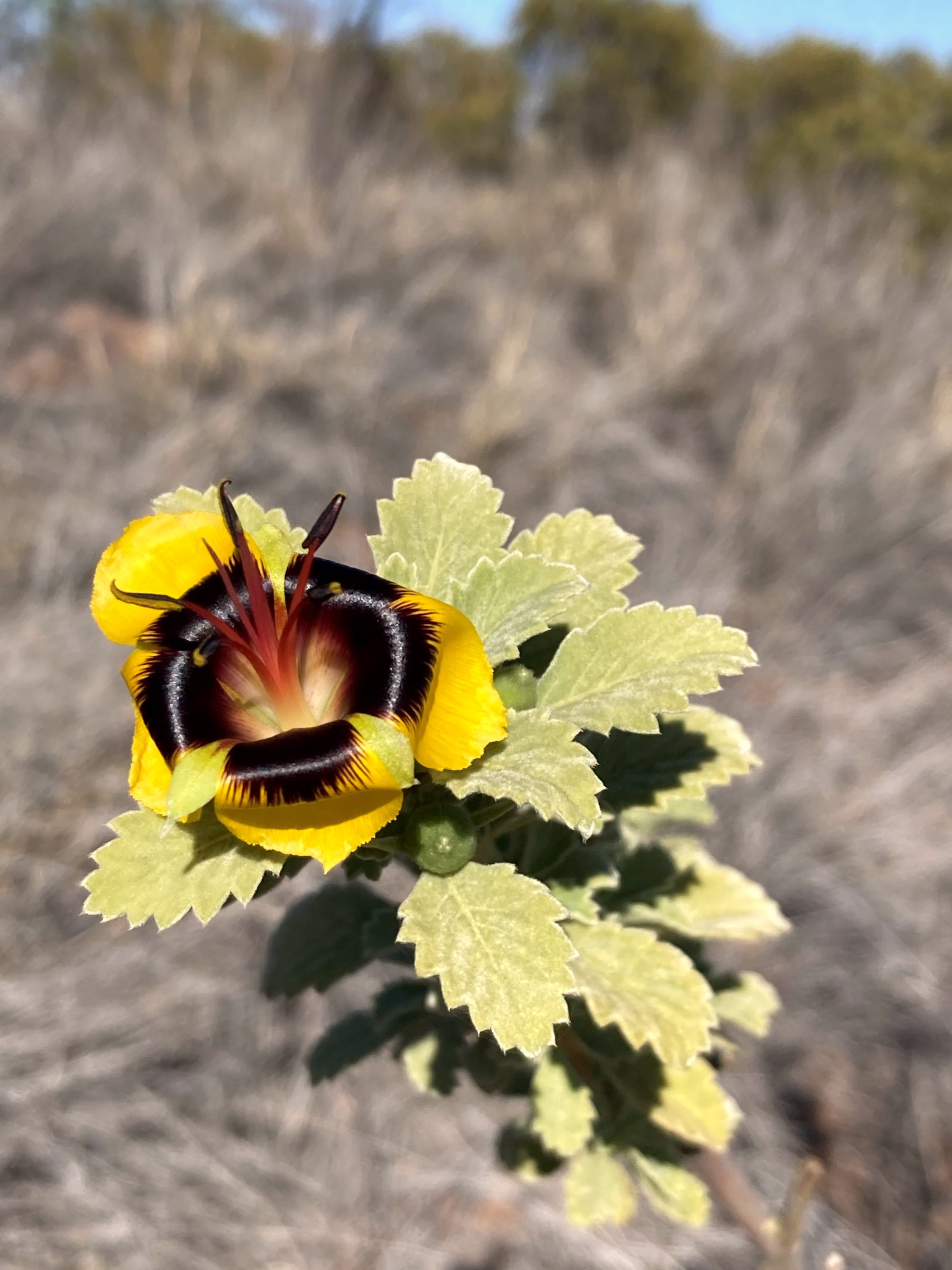
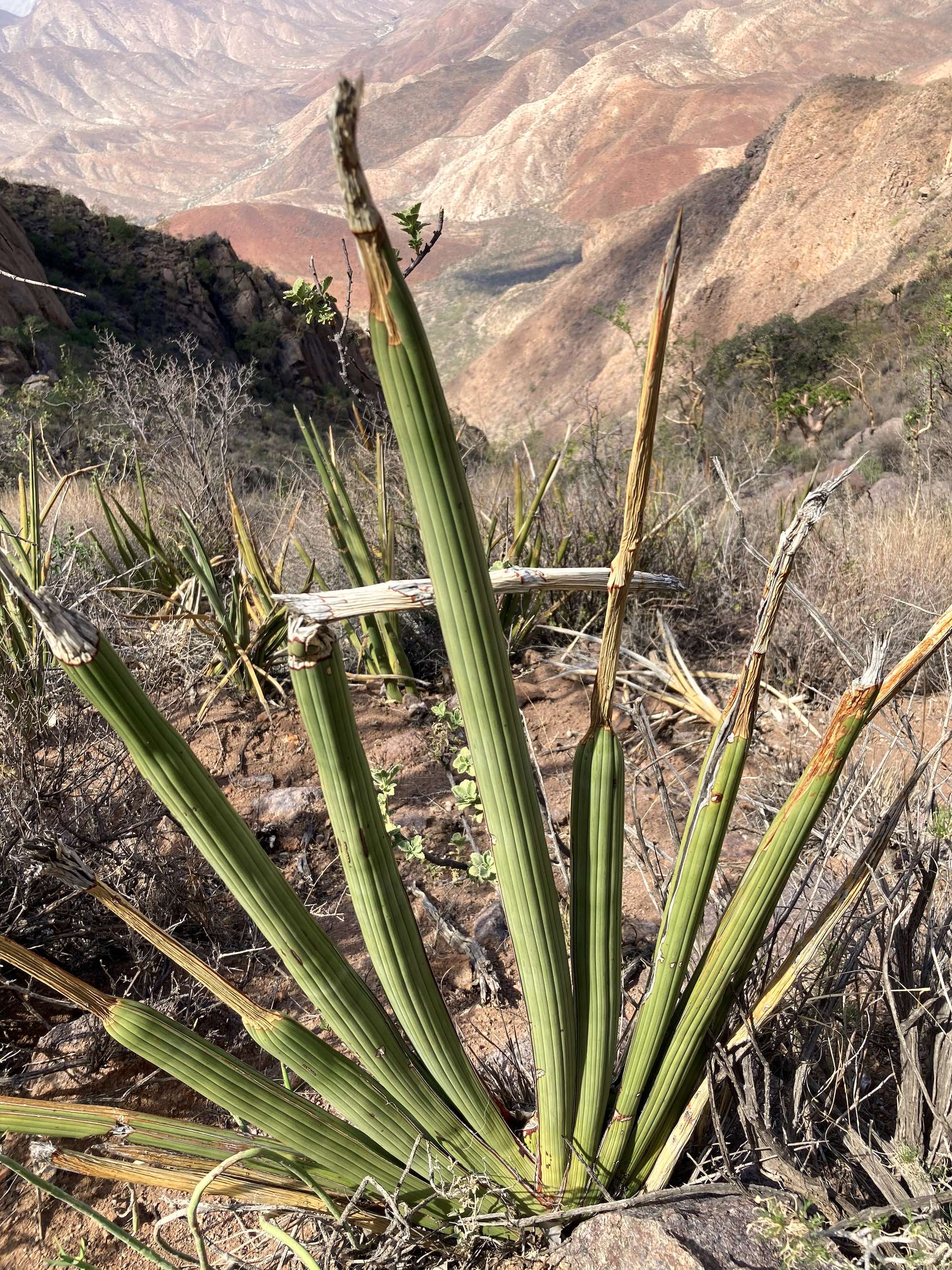
An Excellent Expedition
The diversity of interesting fauna and flora we encountered on this expedition made the many months of planning and preparation absolutely worthwhile. The large number of specimens collected will take the team many months, maybe years, to analyse. Although it is still early days, there is already convincing evidence that a number of species new to science have been found and that many range expansions have been recorded, enhancing our understanding of this unique ecosystem.
Even in the midst of our data deluge, however, it is clear that we unlocked only a fraction of the mystery held by these biodiversity hotspots. There is no doubt that yet more weird and wonderful plants and animals are waiting to be discovered on these inaccessible peaks. This taste of discovery has left everyone on the team thirsting for more – a longer return visit is needed to fully come to grips with the interesting biological variety that makes its home on the remote mountain tops of the Kaokoveld.
For articles on similar topics, please click one of the following options:
If you enjoyed this page, then you might also like:



For more great articles from Conservation Namibia see below...
Conservation Namibia brought to you by:
We use cookies to monitor site usage and to help improve it. See our Privacy Policy for details. By continuing to use the site, you acknowledge acceptance of our policy.








